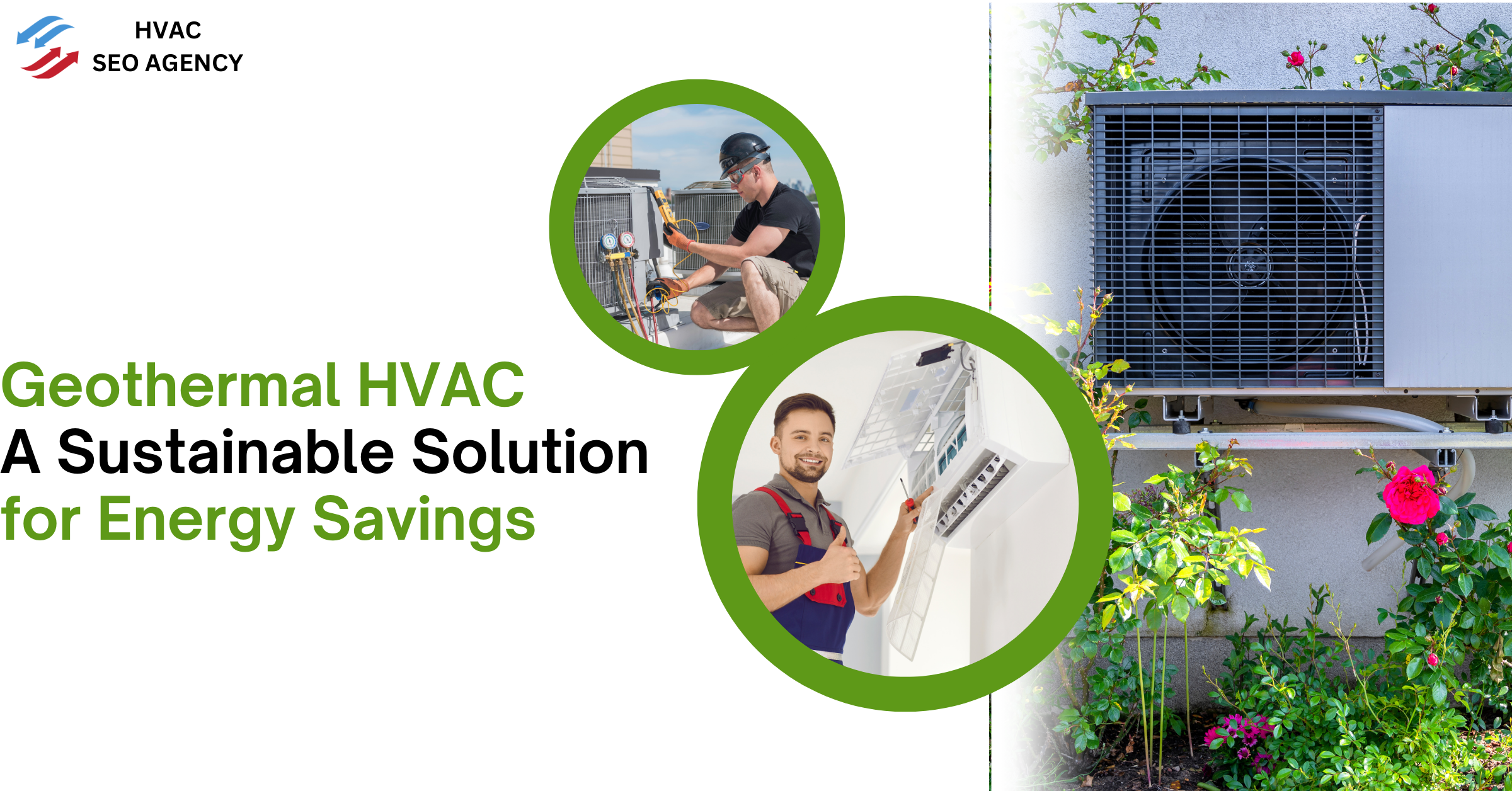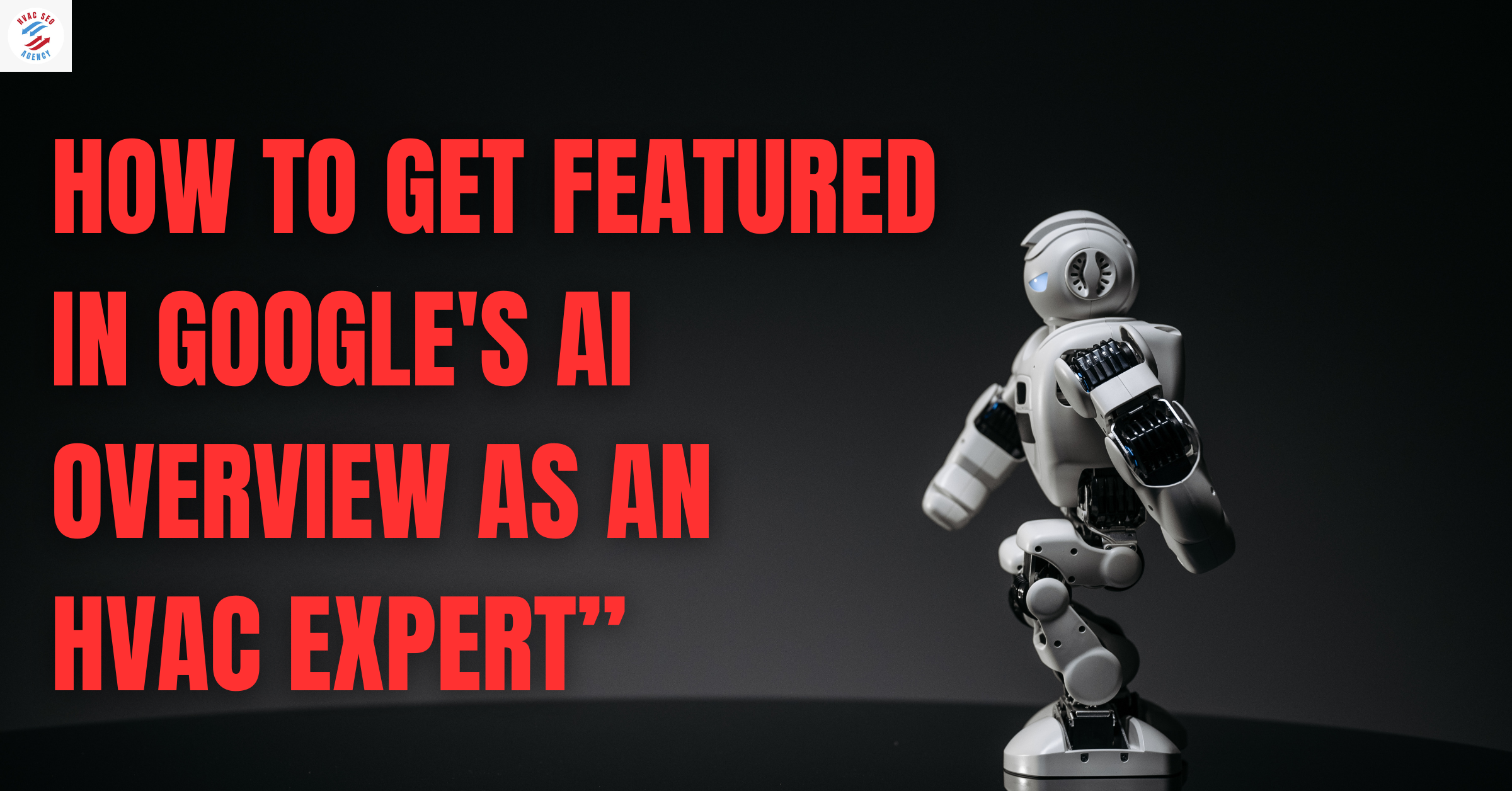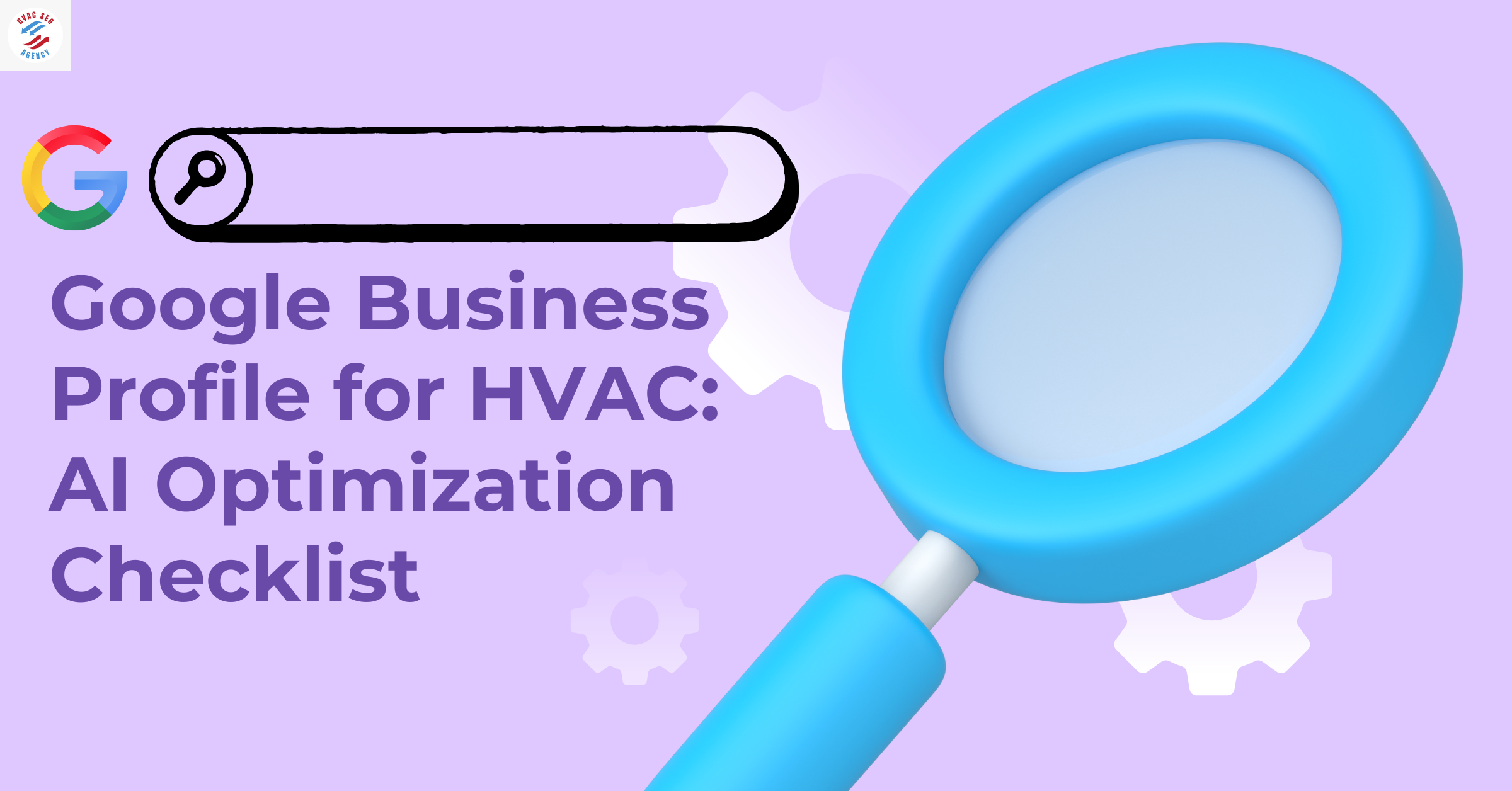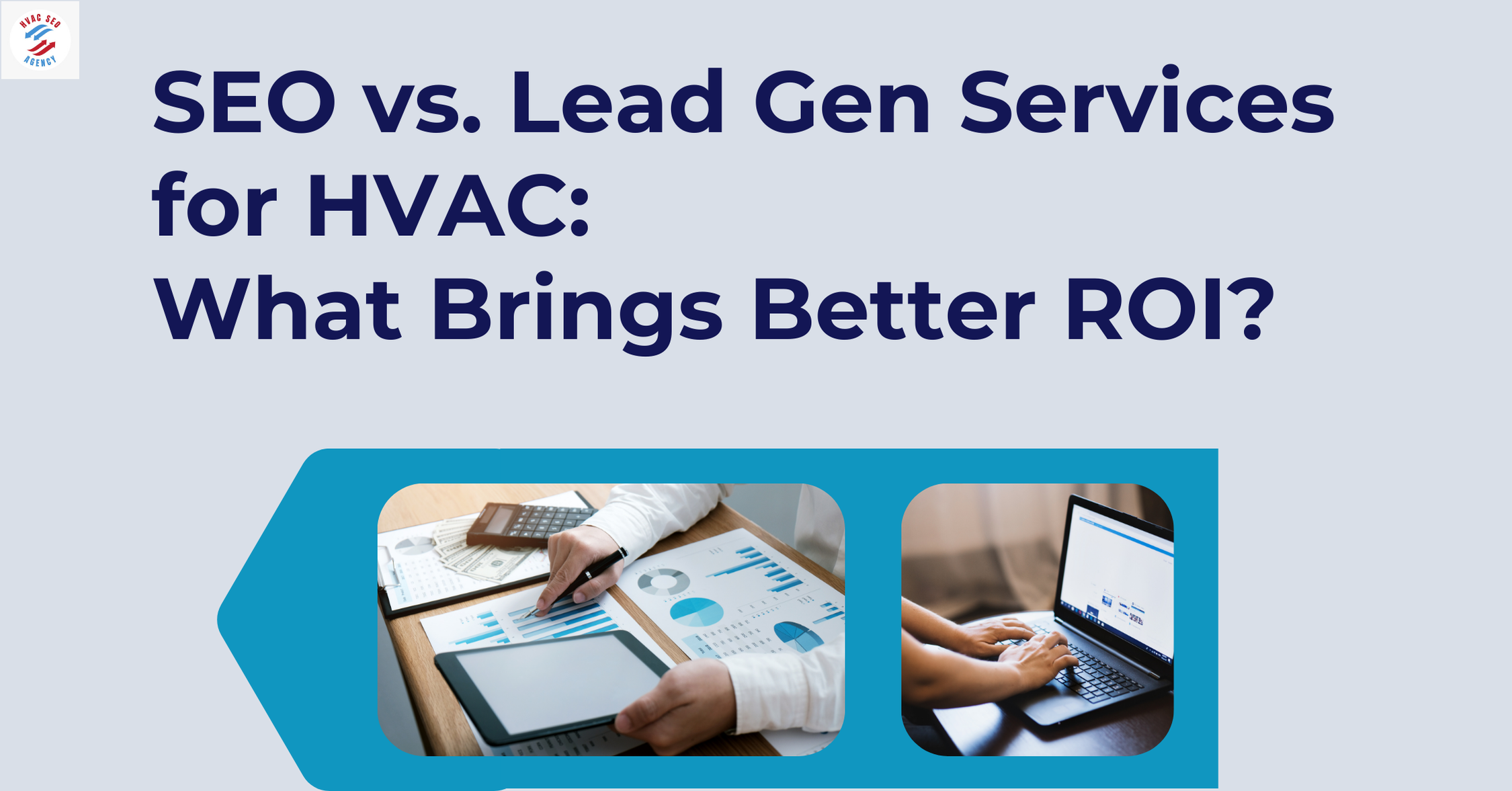Geothermal HVAC: A Sustainable Solution for Energy Savings

In today's world, heating, ventilation, and air conditioning (HVAC) systems are essential for maintaining indoor comfort. However, traditional HVAC systems are energy-intensive, relying heavily on fossil fuels, contributing to high energy bills and environmental pollution. With increasing concerns about climate change and energy efficiency, the demand for eco-friendly HVAC solutions has grown significantly.
One of the most promising alternatives to conventional HVAC systems is geothermal HVAC. Unlike traditional systems that rely on burning fuel or using electricity to generate heat or cooling, geothermal HVAC systems utilize the Earth's natural underground temperature to regulate indoor environments efficiently. This approach drastically reduces energy consumption, lowers greenhouse gas emissions, and offers long-term cost savings.
According to the U.S. Department of Energy (DOE), geothermal HVAC systems are up to 400% efficient, meaning they produce four units of energy for every unit of electricity consumed. This efficiency makes them one of the most sustainable heating and cooling solutions available. Additionally, homeowners and businesses that install geothermal HVAC can benefit from federal tax credits, state incentives, and utility rebates, making the investment more affordable in the long run.
Why an Expert HVAC SEO Agency is Crucial for Your HVAC Business
As more homeowners and businesses look to adopt sustainable, energy-efficient solutions like geothermal HVAC, HVAC contractors must ensure they are easily discoverable online. Partnering with an expert HVAC SEO agency can significantly boost your online visibility and help attract potential customers who are actively searching for eco-friendly HVAC solutions in your area.
An experienced HVAC SEO agency specializes in strategies that help businesses rank higher in local search results, particularly for terms like “geothermal HVAC services”, “eco-friendly HVAC contractors”, or “HVAC services near me”. These SEO experts understand the importance of targeting keywords that align with user intent, ensuring your business appears at the top of search results when customers need geothermal HVAC installations or repairs.
This blog will provide an in-depth analysis of geothermal HVAC, covering:
How it works and its benefits compared to traditional HVAC systems.
Energy savings and environmental impact, backed by data and case studies.
Economic benefits, including cost vs. savings analysis.
Technological advancements improving the performance of geothermal HVAC.
Local SEO and marketing strategies for HVAC contractors, ensuring they attract more customers interested in eco-friendly HVAC solutions.
How an HVAC SEO Agency can help HVAC businesses grow, generate leads, and boost revenue.
By the end of this article, you’ll have a comprehensive understanding of geothermal HVAC, its advantages, and how HVAC businesses can leverage SEO for HVAC Companies in Oklahoma City and Local SEO for HVAC Contractors in Columbus to expand their reach.
2. Understanding Geothermal HVAC Systems
What is Geothermal HVAC?
Geothermal HVAC is a high-efficiency heating and cooling system that uses the Earth's stable underground temperature to regulate indoor climate. Unlike conventional HVAC systems that burn fossil fuels or rely on electric resistance heating, geothermal HVAC transfers heat between a building and the Earth through underground pipes, known as a ground loop system.
How Does Geothermal HVAC Work?
Geothermal HVAC systems operate using four key components:
Ground Loop System – A network of pipes buried underground, filled with a heat-transfer fluid (typically water or antifreeze solution).
Heat Pump – Extracts heat from the ground in winter and transfers it indoors; in summer, it removes heat from the building and dissipates it underground.
Air Delivery System – Distributes heated or cooled air throughout the building via ductwork.
Thermostat Control – Regulates indoor temperature, similar to a conventional HVAC system.
Types of Geothermal HVAC Systems
There are four main types of geothermal HVAC configurations, each suited for different property types and climate conditions:
Closed-Loop Systems (Most Common):
Horizontal Loops – Installed in trenches, ideal for residential properties with ample land space.
Vertical Loops – Drilled deep into the ground, suitable for urban areas or buildings with limited land space.
Open-Loop Systems – Use groundwater as the heat exchange medium and are ideal for properties near a reliable water source.
Hybrid Systems – Combine geothermal with traditional HVAC components for optimized energy efficiency.
Comparison: Geothermal HVAC vs. Traditional HVAC
Lower Energy Costs – Homeowners save between $400 – $1,500 annually on energy bills (source: U.S. Department of Energy).
High Return on Investment (ROI) – With energy savings and tax credits, most installations pay for themselves within 5 to 10 years.
Durability & Longevity – While traditional HVAC units last 10-15 years, geothermal HVAC systems last over 50 years, reducing long-term replacement costs.
Eco-Friendly HVAC Solution – Reduces greenhouse gas emissions by up to 50%, contributing to a cleaner environment.
Government Incentives – The 30% federal tax credit for geothermal HVAC installations makes it an even more attractive investment.
Graph: Efficiency Comparison of Geothermal HVAC vs. Traditional HVAC Over Time
Data of the graph:
Traditional HVAC:
Efficiency starts at 98% and declines by 0.5% each year.
Operational costs start at $2,500 and increase by 5% annually.
Geothermal HVAC:
Efficiency remains stable at 100% (or 1.0).
Operational costs start at $875 and increase by 2% annually.
(Showing the decline in efficiency and increasing operational costs of traditional HVAC compared to the stable efficiency of geothermal HVAC.)
3. Energy Savings with Geothermal HVAC
Geothermal HVAC systems offer substantial energy savings for both residential and commercial buildings in the USA. By leveraging the Earth's consistent underground temperatures, these systems provide efficient heating and cooling solutions that significantly reduce electricity consumption and operational costs. Prepare your HVAC business for the winter season by offering essential services like heating system maintenance, inspections, and energy-efficient upgrades to ensure comfort for your clients.
Energy Consumption Comparison
A study by the National Renewable Energy Laboratory (NREL) and Oak Ridge National Laboratory (ORNL) indicates that retrofitting approximately 70% of U.S. buildings with geothermal heat pumps (GHPs), combined with building envelope improvements, could save up to 593 terawatt-hours (TWh) of electricity annually. This reduction equates to about 15% of the current annual electricity demand in the United States.
The following table compares the energy consumption of geothermal HVAC systems to traditional HVAC systems:
Note: Values are approximate and can vary based on regional factors and system specifications.
Case Studies Demonstrating Energy Savings
Residential Application: A family in a 2,500-square-foot home in the Midwest installed a geothermal HVAC system and observed a 50% reduction in their heating and cooling costs, translating to annual savings of approximately $1,500.
Commercial Application: A 50,000-square-foot office building in the Northeast retrofitted with a geothermal system reported a 40% decrease in energy usage, resulting in annual savings of around $20,000.
The graph below illustrates the energy savings achieved with geothermal HVAC installations in various building types:
Graph: Annual Energy Savings with Geothermal HVAC Systems in Residential and Commercial Buildings.
4. Environmental Impact of Geothermal HVAC
Geothermal HVAC systems are recognized for their minimal environmental footprint, offering a sustainable alternative to traditional heating and cooling methods. By harnessing the Earth's stable underground temperatures, these systems significantly reduce greenhouse gas emissions and contribute to a cleaner environment.
Reduction in Greenhouse Gas Emissions
Traditional HVAC systems often rely on fossil fuels, leading to substantial carbon dioxide (CO₂) emissions. In contrast, geothermal HVAC systems utilize renewable thermal energy from the Earth, resulting in negligible on-site emissions. According to the U.S. Environmental Protection Agency (EPA), geothermal heat pumps are among the most energy-efficient and environmentally friendly heating and cooling technologies available.
The table below illustrates the potential annual CO₂ emission reductions when replacing conventional HVAC systems with geothermal systems:
Note: Values are approximate and can vary based on system efficiency and energy sources.
Additionally, the EPA notes that replacing a conventional HVAC system with a geothermal system is equivalent to planting 750 trees in terms of CO₂ reduction.
Government Incentives and Policies Promoting Geothermal HVAC Adoption in the USA
To encourage the adoption of eco-friendly HVAC solutions, the U.S. federal government offers tax incentives for geothermal HVAC installations. As per the Inflation Reduction Act of August 2022, a 30% federal tax credit is available for residential ground source heat pump installations through December 31, 2032. This credit decreases to 26% for systems installed in 2033 and 22% in 2034.
The graph below illustrates the federal tax credit percentages available for geothermal HVAC installations over the coming years:
Graph: Federal Tax Credit Timeline for Geothermal HVAC Installations
5. Economic Benefits of Geothermal HVAC
Investing in a geothermal HVAC system offers substantial economic advantages for both homeowners and businesses in the USA. While the initial installation costs are higher than traditional HVAC systems, the long-term savings, incentives, and increased property values make geothermal systems a financially sound choice.
Installation Costs vs. Long-Term Savings
The upfront cost of installing a geothermal heat pump system varies based on factors such as home size, soil composition, and system configuration. On average, U.S. homeowners spend between $15,231 and $27,711, with a national average of $21,154. In contrast, traditional HVAC systems typically cost around $7,500 .Despite the higher initial investment, geothermal systems can reduce energy bills by approximately 65% compared to conventional systems. This significant reduction leads to substantial savings over time.
The table below compares the costs and savings of geothermal HVAC systems versus traditional HVAC systems over a 10-year period:
Note: Annual energy costs are estimates and can vary based on regional energy prices and system efficiency.
Over a decade, a geothermal HVAC system not only recoups its higher initial cost but also results in overall savings.
Return on Investment (ROI)
The ROI for geothermal HVAC systems is influenced by installation costs, energy savings, and available incentives. Homeowners can expect the system to pay for itself within 5 to 10 years, depending on energy usage and regional costs.
The graph below illustrates the cumulative costs of both systems over a 10-year period:
Graph: 10-Year Cumulative Cost Comparison: Geothermal HVAC vs. Traditional HVAC
This visual demonstrates that, despite higher upfront costs, geothermal systems become more economical in the long run.
Financing Options and Federal Tax Credits
To offset initial installation expenses, various financing options and incentives are available:
Federal Tax Credits: The U.S. government offers a 30% federal tax credit for geothermal heat pump installations through December 31, 2032. This credit decreases to 26% in 2033 and 22% in 2034.
State Incentives: Many states provide additional rebates or incentives to encourage the adoption of energy-efficient systems.
Financing Programs: Some manufacturers and installers offer financing plans, allowing homeowners to spread the cost over several years, making the investment more manageable.
6. Advancements in Geothermal HVAC Technology
The geothermal HVAC industry has witnessed significant technological advancements, enhancing system efficiency, expanding applicability, and reducing costs. These innovations are transforming geothermal HVAC into a more viable and attractive solution for sustainable heating and cooling across the United States.
As the demand for energy-efficient and environmentally friendly solutions grows, the future of HVAC refrigeration technology is poised for innovation, with advancements in low-GWP refrigerants, smart system integrations, and sustainable cooling methods that promise to enhance system performance while reducing environmental impact.
Enhanced Geothermal Systems (EGS)
Enhanced Geothermal Systems (EGS) represent a groundbreaking development in geothermal technology. Unlike traditional geothermal systems that require naturally occurring hydrothermal resources, EGS creates artificial reservoirs in hot rock formations through techniques like hydraulic fracturing. This approach allows for the extraction of geothermal energy in regions previously deemed unsuitable. The U.S. Department of Energy (DOE) estimates that EGS has the potential to power over 65 million American homes and businesses, significantly expanding the reach of geothermal energy.
Closed-Loop Geothermal Systems
Closed-loop geothermal systems have emerged as a versatile solution, enabling geothermal energy extraction without the need for natural water sources. In these systems, a heat-transfer fluid circulates within a sealed underground loop, absorbing heat from the surrounding rock. This design minimizes environmental impact and allows for installation in a wider range of locations. Recent projects in the United States, Canada, Japan, and Germany have demonstrated the effectiveness of closed-loop systems, showcasing their potential for widespread adoption.
Networked Geothermal Systems
Innovations in networked geothermal systems are transforming urban energy landscapes. In 2024, Eversource Energy launched the first networked geothermal pilot program in Framingham, Massachusetts. This system connects multiple buildings to a shared geothermal heat pump network, efficiently distributing heating and cooling across the community. Such collaborative approaches reduce reliance on fossil fuels and offer scalable solutions for densely populated areas.
Integration with Smart Technologies
The integration of smart technologies into geothermal HVAC systems has enhanced their performance and user control. Modern systems now feature advanced thermostats and monitoring tools that allow for real-time adjustments, optimizing energy use and improving efficiency. These smart controls can adapt to occupancy patterns and weather changes, ensuring optimal comfort while minimizing energy consumption.
Future Trends in Eco-Friendly HVAC Solutions
The trajectory of geothermal HVAC technology points toward increased efficiency, broader accessibility, and integration with other renewable energy sources. Ongoing research focuses on developing materials and methods to reduce installation costs and enhance system longevity. Additionally, combining geothermal systems with solar and wind energy can create hybrid solutions that maximize renewable energy utilization, paving the way for more resilient and sustainable energy infrastructures.
These advancements underscore the dynamic evolution of geothermal HVAC technology, positioning it as a cornerstone of eco-friendly HVAC solutions in the quest for energy efficiency and environmental sustainability.
7. Implementing Geothermal HVAC in Different Climates
Geothermal HVAC systems are renowned for their versatility and efficiency across various climatic conditions in the United States. By leveraging the Earth's relatively constant underground temperatures, these systems provide consistent heating and cooling solutions, regardless of external weather extremes.
Performance Across Various U.S. Climates
The effectiveness of geothermal HVAC systems is largely attributed to the stable temperatures found a few feet below the Earth's surface, typically ranging between 45°F and 75°F (7°C to 24°C), depending on the location. This stability allows geothermal heat pumps to operate efficiently in diverse climates:
Cold Climates: In regions with harsh winters, such as the northern United States, geothermal systems extract heat from the ground to provide reliable heating. Studies have shown that in cold climates, geothermal heat pumps are more effective at reducing carbon emissions and energy consumption compared to conventional HVAC systems, as they displace the need for natural gas furnaces and reduce the use of electric heaters
Warm Climates: In southern areas with milder winters and hot summers, geothermal systems efficiently transfer heat from indoors to the cooler ground, providing effective cooling. In these regions, geothermal heat pumps generate higher electricity savings, making them a cost-effective solution for air conditioning
Moderate Climates: Areas with mild seasonal variations benefit from the consistent performance of geothermal systems, maintaining comfortable indoor temperatures year-round with minimal energy consumption.
The following graph illustrates the efficiency of geothermal HVAC systems across different U.S. climate zones:
Graph: Geothermal HVAC Efficiency Across U.S. Climate Zones
Note: The graph demonstrates that geothermal systems maintain high efficiency levels across various climates, with slight variations based on regional temperature differences.
Adaptations and Considerations for Specific Regional Conditions
While geothermal HVAC systems are adaptable to various climates, certain regional factors influence system design and installation:
Soil Composition and Moisture: The thermal conductivity of the soil affects the efficiency of heat exchange. Moist, dense soils enhance system performance, whereas dry, sandy soils may require longer ground loops to achieve desired efficiency.
Land Availability: In urban areas with limited space, vertical loop systems, which involve drilling deeper boreholes, are preferable. Conversely, horizontal loop systems are suitable for regions with ample land area.
Groundwater Presence: Areas with abundant groundwater can consider open-loop systems, which utilize groundwater directly for heat exchange, offering high efficiency but requiring adequate water quality and quantity.
8. Local SEO Strategies for HVAC Contractors
In today's digital landscape, establishing a robust online presence is crucial for HVAC contractors aiming to attract local customers. Implementing effective local SEO strategies ensures that your business appears prominently in search results when potential clients in your area seek HVAC services.
During the off-season, HVAC businesses can boost customer engagement by offering special promotions, focusing on preventative maintenance services, and leveraging targeted local advertising to stay top of mind.
1. Optimize Your Google Business Profile
A well-maintained Google Business Profile (GBP) is essential for local visibility. To enhance your GBP:
Complete Your Profile: Provide accurate information, including business name, address, phone number (NAP), and operating hours.
Select Appropriate Categories: Choose categories that precisely represent your services, such as "HVAC contractor" or "Air conditioning repair service."
Add High-Quality Images: Upload photos of your team, equipment, and completed projects to build trust with potential customers.
Encourage Customer Reviews: Actively seek and respond to reviews, as positive feedback enhances your business's credibility and search ranking.
Maintaining an updated and engaging GBP can significantly improve your local search performance.
2. Ensure NAP Consistency
Consistency in your business's Name, Address, and Phone number across all online platforms is vital. Inconsistent NAP information can confuse search engines and potential customers, negatively impacting your local SEO efforts. To maintain NAP consistency:
Audit Existing Listings: Regularly review all online mentions of your business to ensure accurate information.
Update Discrepancies Promptly: Correct any inconsistencies in your business details across directories, social media profiles, and your website.
A uniform NAP presence reinforces your business's legitimacy and aids in achieving higher local search rankings.
3. Leverage Online Directories and Citations
Listing your HVAC business in reputable online directories enhances your local SEO by building authoritative backlinks and increasing visibility. To effectively utilize online directories:
Identify Relevant Directories: Submit your business to industry-specific directories and general local business listings.
Provide Comprehensive Information: Include your NAP, website URL, and a brief description of your services.
Monitor and Update Listings: Regularly check your listings for accuracy and update them as needed.
Consistent citations across authoritative platforms signal to search engines that your business is trustworthy and relevant.
4. Develop Location-Specific Landing Pages
Creating dedicated landing pages for each service area enhances your relevance for local searches. To optimize these pages:
Incorporate Local Keywords: Use phrases like "HVAC services in Milwaukee" naturally within the content.
Highlight Local Testimonials: Showcase reviews from customers in the specific area to build local credibility.
Include Maps and Directions: Provide embedded maps and clear directions to your business location.
Tailored content for each locality improves user experience and search engine rankings.
5. Implement Schema Markup
Schema markup is a form of microdata that helps search engines understand your website content, enhancing the display of your business information in search results. To implement schema markup:
Use Local Business Schema: Incorporate schema specific to local businesses, including details like your business name, address, phone number, and operating hours.
Validate Your Markup: Utilize tools such as Google's Structured Data Testing Tool to ensure correct implementation.
Proper use of schema markup can lead to rich snippets, increasing your site's visibility and click-through rates.
6. Encourage and Manage Customer Reviews
Positive customer reviews not only build trust but also influence local search rankings. To effectively manage reviews:
Request Reviews: After service completion, ask satisfied customers to leave feedback on your GBP or other review platforms.
Respond Promptly: Address both positive and negative reviews professionally, showing potential customers your commitment to service.
Highlight Testimonials: Feature positive reviews on your website and social media profiles to build credibility.
Active review management fosters customer trust and enhances your online reputation.
7. Build Local Backlinks
Acquiring backlinks from reputable local websites signals to search engines that your business is authoritative and relevant within your community. To build local backlinks:
Partner with Local Organizations: Collaborate with local chambers of commerce, industry associations, or community groups that can link to your website.
Sponsor Local Events: Participate in or sponsor community events, earning mentions and links from event websites.
Guest Blogging: Contribute valuable content to local blogs or news sites, including a link back to your website.
9. Partnering with an HVAC SEO Agency for Business Growth
In the competitive HVAC industry, establishing a strong online presence is crucial for attracting new customers and increasing revenue. While implementing local SEO strategies independently can yield positive results, collaborating with a specialized HVAC SEO agency can significantly amplify your efforts, leading to enhanced lead generation and business growth.
Benefits of Collaborating with an HVAC SEO Agency
Expertise in HVAC Industry Dynamics
Specialized agencies possess in-depth knowledge of the HVAC sector, understanding seasonal trends, customer behavior, and industry-specific keywords. This expertise enables them to craft tailored SEO strategies that resonate with your target audience.Comprehensive SEO Services
An HVAC SEO agency offers a suite of services, including:
Website Optimization: Enhancing site structure, load times, and mobile responsiveness to improve user experience and search engine rankings.
Content Creation: Developing informative and engaging content that addresses common HVAC concerns, incorporating relevant keywords naturally.
Local SEO Enhancement: Optimizing your online presence to appear prominently in local search results, crucial for attracting nearby customers.
Link Building: Establishing authoritative backlinks to boost site credibility and domain authority.
Access to Advanced Tools and Analytics
Agencies utilize cutting-edge SEO tools to monitor performance metrics, track keyword rankings, and analyze user behavior. This data-driven approach allows for continuous optimization and measurable results.Time and Resource Efficiency
Outsourcing SEO efforts enables you to focus on core business operations while experts handle the complexities of digital marketing, ensuring strategies are implemented effectively and efficiently.
Impact on Lead Generation and Revenue
Partnering with an HVAC SEO agency can lead to:
Increased Website Traffic: Improved search rankings drive more organic traffic to your site, expanding your reach to potential customers.
Higher Conversion Rates: Optimized content and user experience encourage visitors to engage with your services, leading to more inquiries and bookings.
Enhanced Brand Credibility: A strong online presence fosters trust and positions your business as a reputable authority in the HVAC industry.
Sustainable Business Growth: Consistent lead generation and improved customer acquisition contribute to increased revenue and long-term success.
Incorporating professional SEO services into your marketing strategy not only elevates your online visibility but also provides a competitive edge in the HVAC market. By leveraging the expertise of an HVAC SEO agency, you can effectively navigate the digital landscape, attract a steady stream of qualified leads, and achieve substantial business growth.
10. Challenges and Solutions in Geothermal HVAC Systems
While geothermal HVAC systems offer numerous benefits, they also present specific challenges during installation and operation. Understanding these issues and their solutions is crucial for optimal performance and longevity.
1. High Initial Installation Costs
Challenge: The upfront investment for geothermal systems is typically higher than that for traditional HVAC systems, primarily due to the costs associated with drilling and installing ground loops.
Solution: To mitigate these costs, homeowners and businesses can explore federal tax credits, state incentives, and financing options. For instance, the U.S. federal government offers a 30% tax credit for geothermal installations through December 31, 2032. Additionally, some states provide rebates or low-interest loans to encourage the adoption of eco-friendly HVAC solutions.
2. Site-Specific Installation Challenges
Challenge: The efficiency of a geothermal system depends on site-specific factors such as soil composition, groundwater availability, and land area. Rocky terrain or limited space can complicate the installation process.
Solution: Conducting a thorough site assessment is essential. Professionals can determine the most suitable loop system—vertical or horizontal—based on the property's characteristics. In areas with limited space, vertical loops, which require deeper drilling but less surface area, may be more appropriate. Advanced drilling techniques can also address challenges posed by difficult terrain.
3. Ground Loop Issues
Challenge: Problems such as leaks or improper pressure in the ground loop can lead to reduced system efficiency or failure.
Solution: Regular maintenance and monitoring are vital. Installing pressure gauges can help detect issues early. If a leak is suspected, professionals can introduce a dye into the system to locate and repair the breach. Ensuring the loop is properly sealed and pressurized during installation can prevent many common issues.
4. Heat Pump Component Failures
Challenge: Like all mechanical systems, geothermal heat pumps can experience component failures, such as issues with compressors, fans, or electrical controls.
Solution: Routine inspections and timely maintenance are key to identifying and addressing potential problems before they escalate. Homeowners should schedule regular check-ups with qualified HVAC professionals to ensure all components function correctly. Replacing air filters, checking refrigerant levels, and inspecting electrical connections can prolong the system's lifespan.
5. Airflow Problems Due to Dirty Filters
Challenge: Accumulated dust and debris in air filters can restrict airflow, leading to decreased efficiency and uneven heating or cooling.
Solution: Regularly inspecting and replacing air filters is a simple yet effective maintenance task. Depending on usage and environmental factors, filters should be checked monthly and replaced every 1-3 months to ensure optimal airflow and system performance.
By proactively addressing these challenges through proper planning, installation, and maintenance, homeowners and businesses can maximize the benefits of their geothermal HVAC systems, ensuring efficient and reliable operation for years to come.
11. Frequently Asked Questions
Q1: What is a geothermal HVAC system, and how does it work?
A geothermal HVAC system uses underground heat to regulate indoor temperatures. It consists of underground looped pipes that transfer heat between the earth and a building. In winter, it extracts heat from the ground to warm the indoor space, and in summer, it removes indoor heat and transfers it underground, providing cooling.
Q2: How much energy can I save with a geothermal HVAC system?
On average, geothermal HVAC systems can reduce heating costs by 30-70% and cooling costs by 20-50% compared to conventional systems. The U.S. Department of Energy (DOE) states that geothermal systems operate at 400% efficiency, meaning they produce four times more energy than they consume.
Q3: Is a geothermal HVAC system an eco-friendly HVAC solution?
Yes. Geothermal HVAC systems reduce carbon emissions by up to 50% compared to gas furnaces and traditional HVAC systems. They rely on the Earth's renewable thermal energy instead of fossil fuels, making them a sustainable eco-friendly HVAC solution.
Q4: How long does a geothermal HVAC system last?
The underground loop system lasts 50+ years with minimal maintenance.
The indoor heat pump unit lasts 20-25 years, compared to the 10-15 years lifespan of conventional furnaces and air conditioners.
Q5: What is the cost of installing a geothermal HVAC system?
The initial installation cost ranges from $15,000 to $30,000, depending on property size and system configuration. However, federal tax credits, rebates, and lower energy bills make the investment cost-effective over time.
Q6: Are there tax incentives or rebates for geothermal HVAC installation?
Yes. The U.S. federal government offers a 30% tax credit for homeowners installing geothermal systems through December 31, 2032. Additional state and utility rebates may further reduce costs.
Q7: Can a geothermal HVAC system work in any climate?
Yes. Geothermal HVAC systems function efficiently in all U.S. climates because underground temperatures remain stable year-round, ranging from 45°F to 75°F (7°C to 24°C). They provide effective heating in cold regions and cooling in hot climates.
Q8: Does a geothermal HVAC system increase home value?
Yes. Homes equipped with geothermal HVAC systems have higher resale values due to their energy efficiency, lower operating costs, and sustainability. Buyers are often willing to pay more for homes with lower utility bills and environmentally friendly features.
Q9: How does local SEO help HVAC contractors in [City]?
Local SEO for HVAC contractors in [City] helps businesses rank higher in search results when potential customers search for "geothermal HVAC services near me." Optimizing for local keywords, Google Business Profile, and online directories increases visibility and drives more customer inquiries.
Q10: Why should HVAC companies work with an HVAC SEO Agency?
An HVAC SEO Agency specializes in SEO for HVAC companies in [City], helping businesses:
Rank higher on Google for "geothermal HVAC services in [City]"
Increase website traffic and lead generation
Build brand authority and grow revenue through online marketing strategies
12. Conclusion
Geothermal HVAC systems represent the future of sustainable, energy-efficient, and cost-effective heating and cooling solutions. By leveraging the Earth's stable underground temperature, these systems provide significant energy savings, reduce environmental impact, and offer long-term economic benefits for homeowners and businesses in the USA.






